The Beginner’s Guide: Josh & Benny Safdie, Writers & Directors
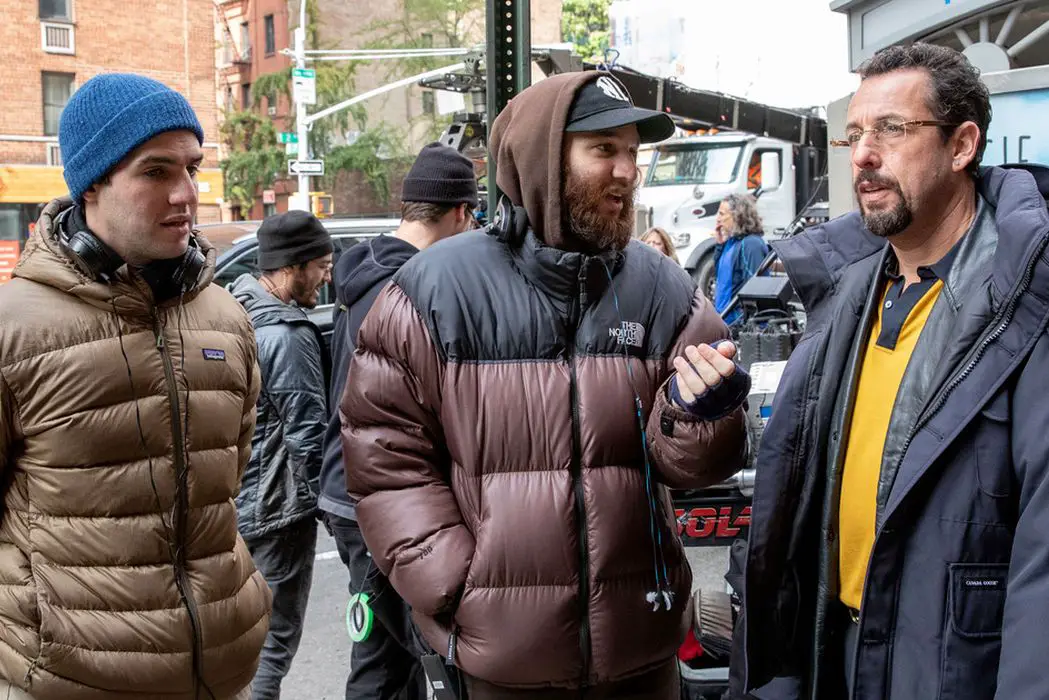
Lee Jutton has directed short films starring a killer toaster,…
The thing about living in the city of New York is that everyone – even people who have never stepped foot in one of the city’s five boroughs – thinks they know New York. The Big Apple, The City That Never Sleeps…whatever you want to call it, there’s no denying that New York has been depicted in popular culture so frequently that everyone has their own version of the city living inside their heads.
Your New York could be the sexy and glamorous world of Sex and the City, where everyone can afford Manolo Blahniks and take long boozy lunches; the hyper-intellectual and neurotic home of every Woody Allen movie, where every character talks too fast and has too many college degrees (not to mention therapists); or the violent and dirty battleground of The Warriors, with gangs running the streets and regular folks afraid to leave their houses after dark. The reality, of course, is an amalgam of all of the above, with a dash of the snarky, sarcastic humor found in your average Seinfeld episode (but especially, the one with the Soup Nazi).
Josh and Benny Safdie know this. Their films depict the New York that those of us who live here love to hate and hate to love (though in the end, we’ll always circle back around to love). Their New York is chaotic, noisy and chock full of opportunities for adventure, good and bad. Their New York is home to colorful characters that are no less real for their quirks – indeed, many of their most memorable casting choices involve random men and women simply pulled off the street to play cinematic versions of themselves. Their New York can be too much to handle, sometimes. But as a New Yorker, I have never seen my home depicted more truthfully onscreen than I have throughout their cinematic oeuvre.
As time progresses, the filmmaking of Josh and Benny Safdie grows more sophisticated, with fancier set pieces and bigger stars, but the city at the center remains perfectly, horrifyingly the same. If you ever want to know the real New York, you can rest assured that any of the following films will provide you with the ideal introduction.
The Pleasure of Being Robbed (2008)

The first Safdie brothers feature isn’t strictly a “Safdie brothers” film; it’s primarily a Josh production, with him directing and Benny credited as an assistant editor. The Pleasure of Being Robbed is a rough-around-the-edges little film about an eccentric kleptomaniac woman named Eleonore, and while it bears more similarities to mumblecore than it does to the Safdies’ higher-octane recent work, there are still many signs of the insanity yet to come.
The actress who plays Eleonore is the first of many recurring Safdie collaborators one will meet on a trip through their filmography – Eleonore Hendricks, who has worked in the casting department on all of their films. Her specialty is street casting, so it’s Hendricks you can thank for introducing audiences to so many of the perfect New York characters who have popped up in the Safdie brothers’ films. This willingness to not only work with untrained actors but to allow them to essentially play themselves, with a lot of improvising and minimal coaching, is a key factor in rendering the Safdies’ New York so authentic; true New York weirdos are not easily replicated onscreen by trained actors, who don’t have the requisite utter lack of self-consciousness to make these characters feel truly lived in.
When we first meet Eleonore, she is walking – not in a glamorous neighborhood full of high-rises, but one that is grungy and scribbled with graffiti – and calling out name after name at a woman walking on the other side of the street. Eventually, by chance, Eleonore gets it right and cheerfully greets the woman, claiming to be a long-lost acquaintance. While doing so, she expertly slides the woman’s large red purse off of her arm and onto her own, without her being any the wiser.
Stealing is a compulsion for Eleonore, one that leads her to take everything from a single grape off a bunch at a market to a large laundry bag that contains a dog and several kittens. At one point, she finds a car key in a stolen purse and begins prowling the street, trying the key in every car she can find until it works. From there, she ends up driving her friend Josh – as in Josh Safdie – all the way to his home in Boston in the stolen car, despite not actually knowing how to drive and having to learn along the way.
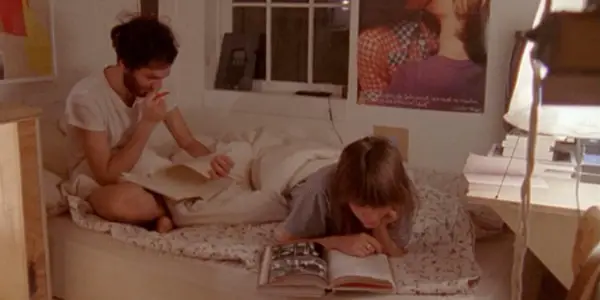
It’s clear that it is the experience, and the adrenaline rush, of stealing that Eleonore thrives on, much more so than the stolen items themselves. After all, she wears the same red sweater and miniskirt every day, when as a skilled thief, she could have a much more extensive wardrobe. Indeed, Eleonore is all about experiences – she enters a table tennis tournament for fun despite clearly not knowing how to play, and when the cops arrest her snooping through a woman’s bag in the park, she coerces them into taking her along to catch another criminal at the Central Park Zoo: “I’ve been to the Bronx Zoo, and the Prospect Park Zoo, but never the Central Park Zoo!” The highlight of the film is when Eleonore sneaks away to visit the zoo’s polar bears and ends up jumping in and frolicking with one, blissful despite the fact that the animal could rip her throat out at any time.
The Pleasure of Being Robbed isn’t as sharp (or as stressful, natch) as the Safdies’ later works, but it’s worth watching for Hendricks’ lo-fi portrayal of a lost girl looking for something indefinable. You can picture Eleonore hanging out with the other eccentrics in the Safdie brothers universe – attempting to steal Julia’s clutch outside a trendy club or encountering Connie in his madcap attempts to break his brother out of prison and tagging along just for the thrill of it. Her relatability and natural charm make Eleonore’s wacky recreational activities more sympathetic than one would initially imagine; it’s just so easy to imagine her striking up a conversation with you in a dive bar somewhere on the Lower East Side while she low-key swipes your wallet.
Speaking of bars: in an extremely memorable but also entirely throw-away scene, a man storms into a bar Eleonore is in announcing that everyone’s drinks are on him, before realizing how crowded the bar is and awkwardly backing out with nervous apologies. Little touches like this might end up on the cutting room floor in another director’s movie, but here they add vibrant color that goes a long way towards rendering this cinematic world so real.
Daddy Longlegs (2009)
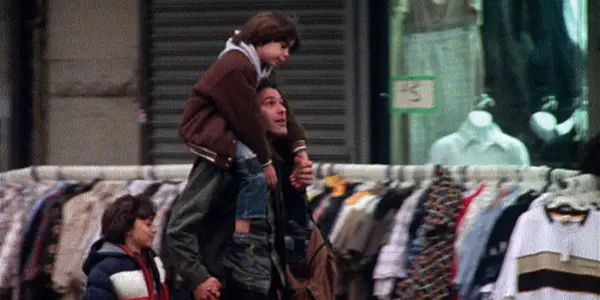
The first feature film to credit both Josh and Benny as directors, Daddy Longlegs – alternately titled Go Get Some Rosemary – strikes close to home. The story of a lackadaisical but loving Brooklyn dad named Lenny whose aimless life is turned upside-down when he is given custody of his two young sons for two weeks each year, the film is loosely inspired by the Safdies’ own experiences with their divorced dad.
In Daddy Longlegs, said dad is played by Ronald Bronstein, an actor and filmmaker who has collaborated with the Safdies on all of their features since, editing and co-writing every single one. That he plays a character inspired by a member of their family in Daddy Longlegs makes sense; when it comes to their films, he is essentially the third Safdie brother.
Like every Safdie protagonist from Eleonore all the way through to Howard Ratner, Lenny is a bundle of chaotic energy whose penchant for repeatedly making questionable bad life choices doesn’t lessen his eccentric charm. Lenny has an equally irresponsible girlfriend named Leni (Hendricks, again), who does things like buy his sons a lizard (that they forget to feed) and march away down a dark subway tunnel after an argument with Lenny. Together, they are an irrepressibly fun pair for two young boys to hang out with, despite (really, because) of the fact that they are such bad influences.
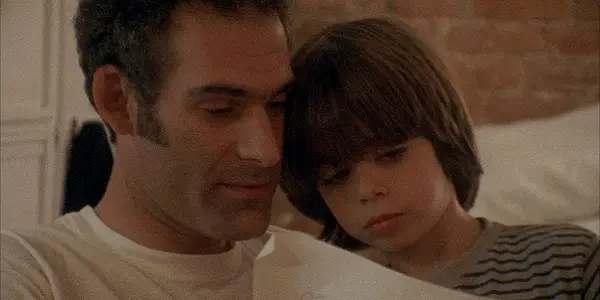
Among the troublesome activities in which Lenny involves his sons are bringing them along upstate on a weekend trip with a woman he had a one-night stand with (and her boyfriend) and drugging them with sleeping pills so he can work a night shift at the movie theater, only for the boys to sleep for a solid 48 hours. At one point he gets arrested spray-painting graffiti on a wall with his friends while the boys are still conked out at his apartment and returns the next morning just in time for them to wake up.
It’s clear that Lenny, who constantly gets into arguments with and alienates every other adult around him, is barely more mature than his kids; he can barely take care of himself, let alone them. It’s also why, when Lenny has to return the kids to their mother at the end of the two weeks, he finds himself feeling strikingly empty and lonely. What is he supposed to do with his life now, without them? When you’re a guy like Lenny, there’s only one way out of such doldrums: kidnapping your own children and spontaneously abandoning your apartment to go someplace you cannot be found.
Daddy Longlegs ends with an iconically New York final shot that wouldn’t be out of place in a classic Woody Allen movie: Lenny and his sons and all of their luggage on board the Roosevelt Island tram, riding it off into a world unknown. Well, not really – it’s obviously going to Roosevelt Island – but one has no idea what sort of future is in store for them. As their tram car disappears into the distance, one is left with a feeling of horror mixed with wonder. It’s not an entirely happy ending, but in the Safdie brothers’ world – as in the real one – we rarely get one that simple anyways.
Heaven Knows What (2014)
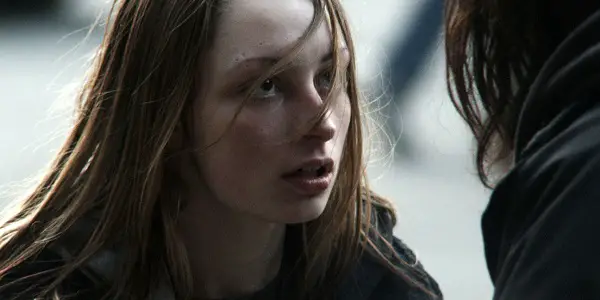
Heaven Knows What is the first Safdie brothers film where many of the stylistic features we now associate with them really start to leap off the screen and assault your eyes and ears. If The Pleasure of Being Robbed and Daddy Longlegs could be described as mumblecore, Heaven Knows What is more of a primal scream. The film’s star, Arielle Holmes, was spotted by Josh Safdie on the streets of New York. After he learned a bit more about her, he convinced her to write down her life story, even paying her by the page. That memoir, Mad Love in New York City, was never published, but it was adapted by the Safdies and Bronstein into this film, starring Holmes as a loosely fictionalized version of herself.
While The Pleasure of Being Robbed and Daddy Longlegs start on relatively lighthearted notes, Heaven Knows What immediately pulls you down the rabbit hole into the swirling darkness that engulfs its protagonist. In the opening scene, homeless heroin addict Harley (Holmes) begs her ex-boyfriend, another addict named Ilya (Caleb Landry Jones), to take her back following a recent breakup. Harley is so desperate to win back Ilya, who refuses to have nothing to do with her, that she asks him if he’d love her again if she died. Not only does Ilya say yes, but he also encourages Harley to slit her wrists with razor blades that she buys with money earned panhandling.
The entire sequence, from Harley’s initial plea to Ilya, to her purchase of the razor blades, to the slashing of her wrists, which causes Ilya to freak out and call an ambulance, is a rollercoaster of emotions. I’ve never used heroin, but watching Harley and Ilya flail about in their drug-addled state made me feel like I was on drugs myself, riddled with paranoia and panic. This sequence sets the tone for the harrowing ride through the New York underworld that is to follow, as Harley wanders around New York looking for couches to crash on and drugs to score. The film’s intensity is ratcheted up further by the musical choices, which range from electronic to hardcore and seem to echo the frazzled state of Harley’s mind at any given moment.
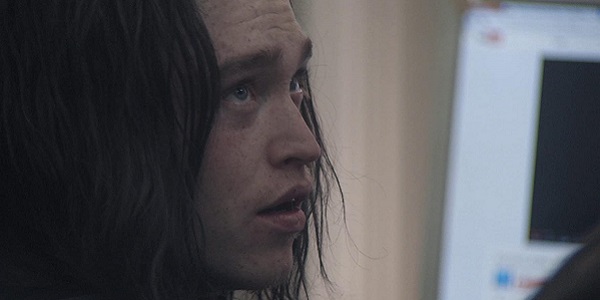
Heaven Knows What is by far the most difficult Safdie brothers film to watch, in large part due to the raw authenticity of Holmes’ performance as Harley. A glossy young Hollywood star, no matter how talented the actor, could never have infused Harley with the natural world-weariness that Holmes brings to the role; actions that could potentially feel over the top feel utterly natural in her desperate state. Her run-ins with fellow addicts in sketchy parks and fast-food restaurants are the kind of thing one sees in the less savory parts of the Lower East Side on any given day, while her obsessive reliance on Ilya, despite his emotionally abusive behavior, is frustrating but also all too believable.
In the film, Ilya dies in a scene that almost feels out of place in the film due to its surreal quality; after abandoning a sleeping Harley on a bus bound for Miami, he enters an abandoned house and dies in a fiery blaze when the candle next to his sleeping space falls over. In real life, Holmes’ Ilya died of a drug overdose in Central Park. The film is dedicated to him, with one left feeling that the character’s on-screen death granted Ilya the dramatic, cinematic exit that he was denied in real life.
Nothing about Heaven Knows What is glamorized in any way, nor is it judged through a moralizing gaze. Rather, it peels back the grime to reveal the humanity hidden behind the haggard faces one sees on the streets of New York every day.
Good Time (2017)
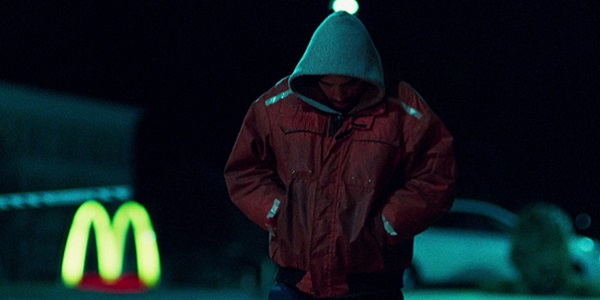
While the Safdies earned increased acclaim with each film they put out, it wasn’t until Good Time that they really exploded on the scene as filmmakers to watch. Starring an almost unrecognizable Robert Pattinson as bumbling bank robber Connie and Benny Safdie as his mentally disabled brother Nick, the film chronicles one insane night in which Connie attempts to break Nick out of prison after a robbery gone wrong. As Pattinson described it in an interview prior to the film’s release, “The next movie is this really hardcore kind of Queens, New York, mentally damaged psychopath, bank robbery movie.” I honestly can’t think of a better description of this wild, whirlwind of a film.
Connie is the kind of guy who is unconvinced that his brother’s therapy is helping him and is absolutely convinced that he should pull said brother out of therapy to partake in a bank robbery. Connie loves his brother, but he’s also a self-destructive person, which means his love is a destructive kind of love, the kind that leads to more bad for the people it’s directed toward than good.
In their attempt to escape from the crime scene, a dye pack in one of the money bags explodes and causes the driver of the car they’re in to crash. The brothers attempt to wash the dye off in a Domino’s Pizza bathroom, but once they start walking down the street, they’re set upon by cops. Nick flees in a panic and is arrested, while Connie escapes. But, as we previously noted, Connie loves his brother, and he’s determined to get him out of prison as soon as possible.
Connie tries to secure a bail bond but is told by the bondsman – who happens to be a real-life bail bondsman in Queens! – that he needs at least ten grand more. He goes to his girlfriend (Jennifer Jason Lee) and convinces her to use her credit cards, but her mother has canceled them all. He hears that Nick was hospitalized from a prison fight and breaks a heavily bandaged man out of the hospital, only to discover that said man is not his brother, but a criminal recently released on parole named Ray (Buddy Duress, who also appears in Heaven Knows What). Basically, Connie can’t get a break – though to be fair, that’s largely his own fault.
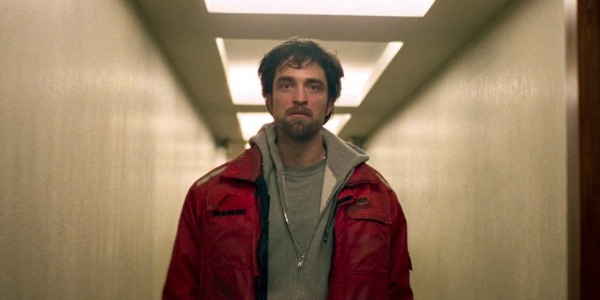
Connie and Ray end up going to an abandoned amusement park to find a bag of cash and a soda bottle full of LSD that Ray hid there. Naturally, this doesn’t go smoothly either – a fight with a security guard (Barkhad Abdi) ends with said guard being knocked unconscious and dosed with some of the LSD. The scene in which he wakes up tripping is one for the ages; in fact, when I saw the Safdies do a Q&A following a screening of Good Time, they said the chance to do that scene was what convinced Abdi, an Oscar-nominated actor for his screen debut in Captain Phillips, to take the role.
Good Time is only a “good time” for those watching these madcap misadventures unfold onscreen, not the characters involved. Nonetheless, for an outside observer, the film is an absolute thrill ride, combining the drug-fueled anxiety and scruffy setting of Heaven Knows What with a healthy dose of dark humor. The film takes place in and around eastern Queens – a refreshing change of pace for New York crime thrillers, which always seem to revolve around Manhattan, and one that grounds the film in a working-class, outer-borough reality. In a role that was literally written for him, Pattinson truly proves his worth as a character actor, his movie-star good looks hidden under a greasy mop of bleached hair and an oversized red parka; he even nails Connie’s Queens accent!
Despite having far more recognizable faces in the cast than any previous Safdie brothers film, Good Time still feels like a gritty slice of New York life, albeit one dialed up to eleven and played at double-speed. Like Heaven Knows What, the music goes a long way towards fully rendering the film’s world; this time, it’s a frenetic electronic score from Daniel Lopatin, whose unique sonic talents also set the hyperactive tone of Uncut Gems. And indeed, it was the acclaim earned by Good Time that enabled the Safdies to finally make the film about a denizen of the Diamond District that they had been planning since prior to Heaven Knows What.
Uncut Gems (2019)
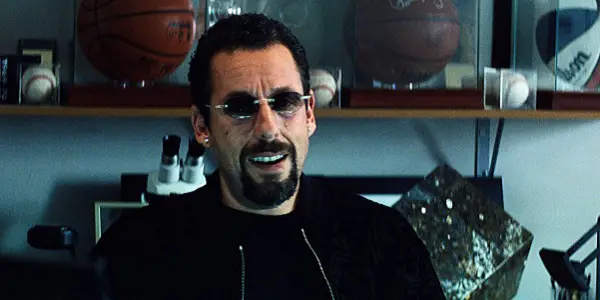
I work directly five blocks north of the Diamond District in midtown Manhattan; I went to a jeweler there to get my engagement ring resized. However, the hole-in-the-wall shop hidden upstairs and run by a solo Yemeni jeweler that I visited is a far cry from what you’ll find on street level on 47th Street between 5th and 6th Avenues. There, the windows sparkle with rows upon rows of jewels, and the shop owners lurk in the doorways, ready to try and lure anyone who looks like they might have a bit of money inside.
Josh and Benny Safdie’s father used to work in the Diamond District; his stories are what inspired the saga of Howard Ratner, the jeweler and gambling addict at the center of Uncut Gems. Played by Adam Sandler in a career-best performance, Howard is a manic glad-hander, someone who proudly wears a Knicks NBA Championship ring and jokes with his famous basketball player customers like they’re his good friends. When he’s not selling watches and necklaces – including an iconic gold-and-diamond bedecked Furby on a massive chain – to famous athletes, he’s betting on their every play on the court. This is why Howard owes thousands upon thousands of dollars to bookies, and why he’s in increasingly deep trouble. He always assumes the next bet is going to be the big score to bring him back on the level, and it never, ever is.
Howard leads a double-life, split between the home he shares in the well-to-do Long Island suburbs with his wife Dinah (Idina Menzel) and his children, and the apartment he keeps in Manhattan for his employee and mistress, Julia (Julia Fox, a New York artist and club kid and yet another in a long line of untrained actors to give a star-making performance for the Safdies). A scene in which Howard hides in the closet of the apartment to surprise Julia, who has brought home the same takeout from swanky steakhouse Smith & Wollensky that he has, is sweet in the romanticism of the coincidence (not to mention its specificity) and gross in the crassness of the infidelity (not to mention Howard’s creepy texts to Julia from the closet, which are both hilarious and cringeworthy).
Just as Howard is incapable of quitting gambling, so he is also incapable of making up his mind to leave Dinah for Julia. When Dinah agrees to divorce after Passover, his first inclination is not to celebrate with Julia but to kick her out of the apartment and beg Dinah to take him back. Like Connie in Good Time, Howard is a man constantly torn between multiple choices, most of which are wrong. And so, the hole he dug for himself grows increasingly hard for him to find a way to scratch and claw his way out.
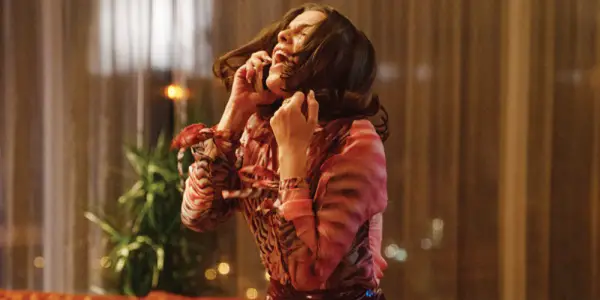
While Sandler is brilliant in the lead role, Uncut Gems stands out for having one of the wildest supporting casts in cinematic history. In addition to Menzel playing against Disney princess type as a tough-talking Jewish American Princess, and Fox lighting the screen on fire with her natural sensuality, we also get former NBA star Kevin Garnett as himself, Lakeith Stanfield as Demany, who brings clients like Garnett into Howard’s shop to spend their big paychecks, sports radio personality Mike Francesa as Howard’s bookie, and actor and playwright Eric Bogosian as Arno, Howard’s loan shark and brother-in-law. It’s a diverse, colorful array of people that all feel 100% real, grounding the manic nature of the film’s storyline in a world that is utterly recognizable to anyone who has ever spent quality time in New York.
The cherry on the top of this lofty cake of a cast is Wayne Diamond, who Josh Safdie met at dinner in the West Village in 2008 and recruited to play a handsome lothario who takes a shine to Julia in the (largely unscripted) casino scenes that are the film’s climax. Once again, it’s hard to imagine any actor playing a character like Diamond better than Diamond just playing himself, all spray-tan, shaggy hair and suave moves.
Howard has purchased a rare black opal from Africa that he is hoping to auction at Christie’s to earn enough money to pay off his gambling debts. Garnett visits his shop with Demany and becomes obsessed with the gem, asking first to borrow it for good luck and then demanding to buy it. But Howard refuses to sell to Garnett, assuming he can get more money for it at auction. Naturally, this is yet another one of Howard’s misguided choices that inevitably comes back to haunt him. In the end, he has to send Julia via helicopter to a casino with a lengthy and hyper-specific list of bets in the hope that he can make back the money before Arno and some trigger-happy henchmen bust through the bulletproof glass window of his shop and kill him.
What actually happens is a twisted combination of both, a shock ending that no one, including Howard, could have seen coming. Yet it’s also an ending in keeping with the Safdie brothers’ previous films, one that is equal parts light and dark, upbeat and heartbreaking. Nothing ever ends cleanly in a Safdie brothers film, and that’s what makes their films hit you so hard in the gut, leaving you feeling vaguely winded as though you too were racing against the clock to win that one last big score. Their films swallow you up and spit you back out again with gusto, leaving you simultaneously exhausted while also wanting more. In other words, their films feel just like a visit to New York.
Conclusion
From The Pleasure of Being Robbed to Uncut Gems, the hectic, chaotic cinema of Josh and Benny Safdie is instantly recognizable as no one else’s but theirs. Yet their New York, and the people who populate it, is also instantly recognizable: as mine.
Does content like this matter to you?
Become a Member and support film journalism. Unlock access to all of Film Inquiry`s great articles. Join a community of like-minded readers who are passionate about cinema - get access to our private members Network, give back to independent filmmakers, and more.
Lee Jutton has directed short films starring a killer toaster, a killer Christmas tree, and a not-killer leopard. Her writing has appeared in publications such as Film School Rejects, Bitch: A Feminist Response to Pop Culture, Bitch Flicks, TV Fanatic, and Just Press Play. When not watching, making, or writing about films, she can usually be found on Twitter obsessing over soccer, BTS, and her cat.













